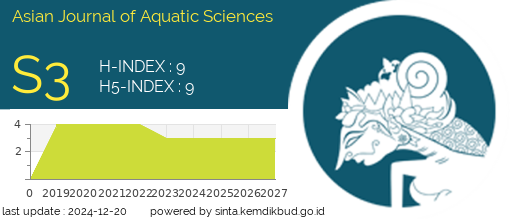YASHIL GOL’S ECO-TOURISM POTENTIAL: STUDY CASE
DOI:
https://doi.org/10.31258/ajoas.8.2.138-147Keywords:
Ecotourism, Aerospace Material, Radar Technique, Climate, EcosystemAbstract
The richest eco-tourism potential and real ecosystem of Yashil Gol were studied using remote sensing methods in aerospace sources. Based on these materials, the eco-geographical factors of the lake were revealed using OpenStreetMap and Google Earth. The lake territory comprises 2,551 m² (0.26 ha), and the total perimeter of the lake circle is 202.4 m. The lake’s absolute height is about 909 m above sea level, and the relative height is 1.37 km. The lake shape resembles an oval leaf from space. Consequently, the map length is 76.60 m, but the ground length is approximately 76.96 m, with a heading of 193.43° on the Google Earth map. The lake’s map width is 63.37 m, but the ground width reaches 63.39 m, with a heading of 90.59 ° on the Google Earth map. Yashil Gol is located at 40°45'35"N latitude and 48°32'19"E longitude. The eco-tourism reserves of Yashil Gol haven't been studied by researchers today. Correspondingly, the climate conditions of the lake territory were investigated, and the data are presented in the paper. According to Landsat and other aerospace materials, as well as visits to the lake throughout the four seasons, monitoring deals with climate, forest, and visitor impacts. The woodland cover square around the lake was defined as about 0.88 ha within a 678 m perimeter. There is only one small café on the lakeshore. None of the cottages, hotels, or hostels are located here. Orthofauna members are observed in Autumn as wild birds migrate to warmer areas. The birds are mainly included in the «Green Book» and «Red Book» of the Republic. To investigate the entire ecosystem of Yashil Gol, researchers from various scientific fields must study it.
Downloads
References
1. Openstreet Map. Aerospace Map of Yashil Gol. https://www.openstreetmap.org (accessed in October, 2023)
2. Achigsoz, S., Gulay, C., et al. Linkages Among Ecotourism, Landscape and Natural Resource Management, and Livelihood Diversification in the Region of Sugla Lake. International Journal of Sustainable Development World Ecology, 2016; 23(1): 15-27.
3. Brockerhoff, E.G., et al. Forest Biodiversity, Ecosystem Functioning and the Provision of Ecosystem Services. Journal of Biodiversity Conservation, 2017; 26(2): 305-335.
4. Buckley, R. Tourism and Environment. Annual Review of Environment Resources, 2011; 36 (3): 397-416
5. Butarbutar, R. et al. Environmental Effects of Ecotourism in Indonesia. Journal of Indonesian Tourism Development Studies, 2013; 1(3): 97-107
6. Meteoblue Climate, Climate condition of Yashil Gol. https://www.meteoblue.com/en/weather/agriculture/meteogramagro/shamakhi-rayon_azerbaijan_585030 (accessed in September 2023)
7. Edwin, M., et al. Assessment of Natural Resources and Local Community Participation is Nature-Based Tourism of Wehea Forest, East Kalimantan. Tropical Forest Management Journal, 2017; 23(3): 128-139.
8. Harbi, J., et al. Making a Bridge Between Livelihoods and Forest Conservation: Lessons from Non-Timber Forest Products' Utilization in South Sumatera, Indonesia. Forest Policy Economics, 2018; 94(2): 1-10
9. Kamaludin, K., et al. Strategy Formulation of Balek Angin Lake as an Ecotourism Attraction to Support Sintang Regency's Sustainable Development Program. Journal of Indonesian Tourism Development Studies, 2020; 8(3): 165-173
10. Nugroho, I., et al. The Planning and the Development of the Ecotourism and Tourism Village in Indonesia. Journal of Socioeconomics, 2018; 1(1): 43-51
11. Rahma, N.E., et al. Valuation of Ecosystem Services of Tropical Forests: A Case Study of Several Villages in East Kalimantan. Journal of Development Research, 2020; 2(2): 67-78
12. Reinhart, H., et al. Speleogenetic Process of the Suaran Block, Karst of Sangkulirang-Mangkalihat, East Kalimantan. Web of Conferences, Pek. Indonesia, Jul., 2020; 200-206
13. Roy, J., Exploration of Rural Tourism in the Merabu Village Forest. Journal of Pesona Tourism, 2021; 6(1): 36-48
14. Sihite, R.Y., Priority Natural Tourist Attraction Potential in the Work Area of KPH Unit XIII Gunung Rajabasa, Way Pisang, Batu Serampok, Lampung Province. Journal of Sustainable Forests, 2018; 6(2): 84-93
15. Sisriany, S., et al. Ecotourism Policy Research Trends in Indonesia, Japan, and Australia. The Journal of Tropical Forest Management, 2020; 26(2): 178-188
16. Mammadova, U. Caspian-Sea Ecotourism Potential: Sustainable Development and Conservation Perspectives. The 13th International and National Seminar of Fisheries and Marine Science (ISFM XIII 2024), BIO Web of Conferences, November 11, 2024; 136, ANo:04006:1-10.
17. Mammadova, U. Effect of Humic Substances on Yield and Nutrient Contents of Eggplant Santana (Solanum melongena) Plants in Gray-Brown Soil. Eurasian Journal of Soil Science, 2023; 12(1): 98–103
18. Mammadova, U. Estimation of the Renewable Energetic Potentials: Case Study in Azerbaijan. Advances in Energy Research Energy and Power Engineering. 1st ed, NOVA, 2013: 557-583
19. Mammadova, U. The Effect of Bio-Humus on Cardinal Grape Yield (Vitis vinifera L.) and Nutrient Contents of Dark Brown Soil using Drip Irrigation Systems under The Open Field Conditions. Eurasian Journal of Soil Science, 2022; 11(4): 345–352, 2022
20. Mammadova, U. Wind Energy Potential Estimation in Pirgulu Region. American Journal of Environmental Engineering, 2012; 2(4): 109-113
21. Sandhyavitri, A., et al. Reduction of Carbon Emissions from Tropical Peat Land Fire Disasters Using Weather Modification Technology. Environment and Ecology Research, 2023; 11(5): 834–848
22. Wang, L.E. Ecotourism Environmental Protection Measures and Their Effects on Protected Areas in China. Journal of Sustainability, 2014; 6(10): 6781-6798
23. Nur, C., & Majid, F. The Effect of Sprint Training on Vertical Jump Height of Female Youth Volleyball Players. International Journal of Human Movement and Sports Sciences, 2021; 9(2): 334-339
Downloads
Published
Issue
Section
License
Copyright (c) 2025 Ulviyya Mammadova (Author)

This work is licensed under a Creative Commons Attribution 4.0 International License.







